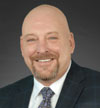5 Techniques to Fine-Tune Your Dealership CRM

Ask a handful of people in various roles at a typical dealership what customer relationship management (CRM) means to them, and you’ll get a variety of different answers.
To some, the answer will relate to their direct, personal relationships with leads, buyers, and service customers.
To others, the explanation will have something to do with formal concepts and strategies regarding customer engagement, satisfaction, and retention.
But to many, especially owners and general managers, CRM most likely represents an expensive technological investment the dealership has made to convert more leads, integrate business operations, cultivate lifetime customers through service and future sales, and much more.
The different responses to the question of “what is CRM?” help us understand why it can be such a large, unwieldy can of worms for dealers — especially to those who have been disappointed by the staff usage rate, user-friendliness, or, most critically, bottom-line results of their dealership CRM system. To get to the core of why CRM doesn’t seem to be making a difference or working out for some dealerships, it’s important to consider all three interpretations to the question of what CRM means.
Could it be that unlocking successful dealership CRM comes from considering all angles? CRM is an essential business software tool, sure, but it’s also a way of personally interacting with your customers on an engaging, human level and a conceptual idea about how to grow and optimize a dealership’s profitability.
With that in mind, we asked thought leaders from automotive vendors that know a thing or two about this subject — AutoLoop, ELEAD1ONE, and DealerSocket — to share their five best techniques for dealers to fine-tune their dealership CRM to maximize its potential . . . and their ROI.
Their answers come from a variety of perspectives that integrate the personal, conceptual, and technical sides of customer relationship management, and help unlock its deep mysteries.
PARTICIPANTS

Stephen Coambes is AutoLoop’s director of professional services. Stephen began his 25-year career in the automotive industry as a porter. Working his way through the ranks, Stephen spent a decade in variable ops before eventually migrating to the other side of the business. In fixed ops, Stephen discovered his knack for customer service — and achieving high CSI scores. To contact Stephen, email scoambes@autoloop.com.

Bill Wittenmyer is a partner at ELEAD1ONE, a leading vendor of automotive software and CRM solutions. Bill has more than 20 years of experience in automotive, and oversees multiple divisions within the organization, including sales, marketing, OEM relationships, and large-client accounts. Highly regarded as a dynamic and motivational speaker, as well as a leader with nontraditional views, Bill has presented at numerous automotive forums and contributes to top news publications in the industry. Prior to ELEAD1ONE, Bill held various positions in retail automotive operations management. He earned his degree from Ashland University and took postgraduate courses at Georgia Southern University.

Aaron Schinke is DealerSocket’s director of product management, and is one of the automotive retail industry’s go-to resources for strategic guidance pertaining to SEO and SEM, as well as digital analytics and dealership website design. In his current role, Aaron leads development and oversees implementation of the organization’s product strategy for all digital and web solution offerings. He also manages solution integrations across DealerSocket’s fully integrated automotive technology platform, helping dealers drive profitability across all aspects of their business. Aaron holds a degree in marketing and advertising from the University of Northern Iowa, and holds Google AdWords and Google Analytics certifications.
Technique 1:
Integrate with key tools
Coambes: The saying “it’s not what you know, it’s who you know” applies to CRMs as well as people. Regardless of strength and capability, a CRM that isn’t fully integrated with other dealer management systems is significantly limited. The more integrations you can access within the automotive industry, the more powerful the CRM. And these integrations often mean ease of use and competitive advantages for your dealership, too.
These integrations go beyond DMS systems — the right CRM should integrate with other various vendors, partners, and clients as well. Options to access third-party tools for marketing, trade appraisal, F&I, and more can simplify your processes and give you an edge over the competition. For example, you should be able to fully work a deal in the CRM, then push it to the DMS for targeted, coordinated, and consistent messaging; improved dealer-customer communication; and measurable results across the board.
Effective notes
Wittenmyer: Typically, salespeople write brief, cryptic notes. Any person should be able to view a contact record and have the same level of knowledge about a customer as the salesperson. I’m not saying that you have to write a John Steinbeck novel, but details are very helpful. Notes improve both accountability and communications.
For example, there’s follow-up and then there’s effective follow-up. How do you know follow up is effective if the salesperson merely notes, “Left vm”? What was the call to action in your voice mail? What was the goal of the call? What about “checked in with customer”? Checking in isn’t just, “Hey, have you made a decision yet?” That’s not effective communications.
Why isn’t the customer taking the next step? What information do they need to make a decision, and how are you helping with that? These details should be in the notes.
Website integrations
Schinke: By leveraging data from their website through CRM, a dealer can not only improve their customers’ experience, but can empower staff to have more meaningful conversations. There are several touch points in which data exchanged from CRM to web and vice versa is advantageous. First, being able to monitor engagement on your website is key. By identifying current CRM contacts with specific interactions on your website, you may be able to spark a conversation based on site activity. If customers are looking at inventory or service specials, chances are they are in a position to purchase. Even something simple like filling out a credit application online should flow directly into CRM without data loss. If utilizing a digital retail tool, syncing with your desking tool allows your site visitors to build their own deals and, when they are ready, send a test drive request directly to your CRM.
Technique 2:
Maximize engagement with campaigns
Coambes: The proper CRM can organize, automate, and synchronize all customer communications across all dealership departments. Take advantage of this data to drive sales and service through strategically targeted marketing campaigns. Because it incorporates information unique to each individual customer, a CRM is invaluable in helping capture and engage those customers at every point in the ownership life cycle.
Choosing a CRM that integrates with the necessary components to reach and retain your customers is crucial. You already have a wealth of revenue opportunities in your database, so be sure to choose a marketing solution that works for you. To ensure the highest reach and number of opens, select campaigns that resonate with your audience through multiple channels. Keep your messaging consistent and free of “over sales-y” language. Deliver offers specific to your desired target. And double-check your lists to be certain they’re the most up to date before you launch your campaign.
Daily marketing plans and one-on-ones
Wittenmyer: Every salesperson should make time for five or six high-priority follow-ups every day. Do it first. The other stuff you have to do will get done. So, prioritize the proactive activities that fill your pipeline. We know one-on-ones are a standard practice, but they’re not always an executed practice. It’s important for managers to meet with every member of the sales team every day. Review the status of every deal. Where are we at? What can we do to put this one together? Why did we lose this deal? First, two heads are better than one for brainstorming solutions to problems. Second, these meetings push the salesperson to do the work they don’t want to do. Third, it’s a learning process. Fourth, you can save shaky deals. If you save four deals a week, that’s 16 sales per month. How can you not have time for that?
Improve data mining process
Schinke: By integrating equity mining efforts tightly with their CRM, dealers can simplify how they find customers that are likely to purchase. If a customer is in an equity position and they happen to fall into someone’s task list, the conversation the dealership is having can be a lot more valuable for the customer. For example, if a customer has a service appointment scheduled for the day, there should be a notification for the desk manager that there is a service waiter he or she should be talking to. Create a process to appraise these vehicles when they come into the service drive, and present a payment analysis for the customer that shows cost of keeping their current car plus maintenance fees versus trading into a new vehicle. Also, dealers can manage nurture campaigns to these customers through CRM, rather than following the spray-and-pray method.
Technique 3:
Maintain vital follow-up
Coambes: An internal AutoLoop study shows that 26% of customers who received follow-up from a dealership went on to actually purchase from that dealership. Only 15% of customers said the same when they received no follow-up at all. More than just a nice gesture, strategic follow-up is now expected by 74% of customers, so it can be a significant deal-breaker in the vehicle purchase process if they don’t receive it.
A highly capable CRM can make a valuable impact by essentially doing all the follow-up for you. For example, some systems contain an automated follow-up process to maintain consistent customer contact. By keeping customers engaged with a specific message for every scenario, fewer profit opportunities slip through the cracks. An automated system also means less hassle on your part — and less chance the customer will go elsewhere for their sales and service needs.
Email marketing
Wittenmyer: I’ve purchased two Porsches from the same dealer, and you know what they send me? Blanket offers for a wide range of things — products and services related to models that I don’t own. This stuff is not relevant to me at all. Too many dealers are still doing bulk campaigns with generic messages. There’s no excuse for this. Every CRM allows you to segment customers, send out specific offers, do A/B testing, and measure response rates. If a vehicle has close to 50,000 miles, send an offer for shocks and struts. If a vehicle is closer to 60,000 miles, send an offer for timing belts. CRMs have templates that make this relatively easy. Open rates for untargeted emails are in the teens. Open rates for targeted emails range from 25% to 30%. The difference in those response rates is worth the extra effort.
Customize follow-up
Schinke: Any form of communication that a consumer receives that doesn’t provide personal, relevant, or valuable information is spam to them. Improve your follow-up methods by making sure your communications are tailored to each specific customer. This is where CRM comes in. CRM houses all the pertinent information of every customer — make sure you are leveraging this data! Your CRM should track preferred communication methods of each contact, whether it’s email, phone, or text, so you know how to contact them. CRM should also be tracking vehicles of interest, number of dollars they’ve spent with you (loyalty), source type, and what their hot buttons are. Utilize business rules and campaign milestones to automate tasks and content based on these details when possible. Add the personal touch by letting them know how you can help them specifically, whether it’s a price reduction, a new incentive, new/similar units, dealership perks, etc.
Technique 4:
Utilize relevant reports
Coambes: Reviewing and understanding the various reporting capabilities of your CRM is key to ongoing efficiency, growth, and profitability for both sales and service. A robust system will instantly generate easy-to-read reports that show where your strengths lie and where improvements should be made. As no business is exactly the same as the next, dealers should be able to create their own reports or customize existing ones to fit their reporting needs. Adding or removing fields, specifying employees or departments, applying filters, and more can tailor your at-a-glance results. Most CRM platforms will also provide a drill-down on past and current marketing campaigns to drive optimal effectiveness, automatically monitor efficiency across the service lane, show an exhaustive breakdown of all dealership staff activity, reveal the sales staff’s response rates and times to internet leads, and more. Monitor and optimize every aspect to start seeing higher success.
Log opportunities
Wittenmyer: Dealers have gotten much better at this, but there’s still room for improvement. These days everyone has a smartphone with apps. Get an app that can be used to take a photo of a driver’s license, and that automatically populates your CRM fields with information from the license. Employees need to get over their fear of asking for personal information, like phone numbers and emails. One thing’s for sure: if you don’t ask, you don’t get. If you do ask, there’s a pretty good chance you’ll get it. As a salesperson, you should never prejudge someone. You may see someone sitting in the service waiting area. Why not start a conversation? It may go nowhere, or it may go somewhere. A short, friendly conversation is never a wasted effort. Like anything else, it helps if there’s a process that people are trained on and held accountable to.
Mobile usage
Schinke: Consumers expect transparency during the buying process. They also want to do business with someone they can trust. Mobile applications not only help retailers build trust and foster transparency, they also lead to time savings as well. Power up your staff with mobile applications that improve their interactions with customers. By using apps like a mobile driver’s license scanner before the test drive, a VIN scanner during appraisals, mobile CRM, and mobile desking during the sales process, sales reps don’t have to leave their customer’s side, and can include them in all the steps of the process. On the service drive, advisors should have a mobile check-in process, so customers are doing the walk-through with them. By infusing mobile interactions and bringing in your customers in more of the process, they will trust you more, can level-set on expectations, and decrease the time they are actually in your store.
Technique 5:
Keep your CRM clean
Coambes: A CRM’s greatest strength may be its ability to provide easy, immediate access to all valuable data for every customer — all in one place. Conversely, that same access to information can be a tremendous liability. If it’s inaccurate or outdated, potential sales can be overlooked, repeat opportunities could be missed, or customers may receive irrelevant, duplicate, or repetitive messaging that reflects poorly on your dealership.
To ensure deliverability and accuracy, dealers should choose a CRM that is consistently cleansed and updated. Powerful platforms will be able to analyze key data from your DMS and determine exactly how many customers are not receiving communications.
By correcting the information and utilizing a third-party resource, it’ll scrub the database to track down valid addresses for missing customers and update it with the most accurate information available. If your current CRM does not do this for you, find a key integration that will.
Data sharing
Wittenmyer: If I own six stores in a metro area and a customer has purchased vehicles from three of those stores, that customer is very valuable to me. Yet, the other three stores don’t think that customer is valuable. If that customer shows up at store number four, how will they be treated?
Most CRMs allow managers to see a global view of customer activity across all stores in the same group. But 99% of dealerships don’t have this feature enabled, because of fear of pushback. Stores in the same group compete for the same customer, so they don’t want to share information. That’s crazy. A customer does not belong to one store or one employee; that customer belongs to your brand. I can go to any Total Wine store in the country and the clerk will see that I am a valued customer. Dealer groups need the same setup.
Customize user experiences
Schinke: Dealerships have a lot of staff accessing the same CRM instance, from BDC reps to sales reps to sales managers to GMs. However, each of these users has a very different function from one another and thus, their CRM experience should be customized based on their role. By personalizing their login and home screen, for instance, you are empowering them to focus on what they need to focus on to be successful in their day-to-day.
Sales reps, for example, should only have visibility to their tasks, their hottest prospects, and the most recent opportunities they are working on, while BDC reps should see that day’s appointments right away, so they can make their confirmation calls. General managers should have their favorite reports at their fingertips, and sales managers should always have easy access to the desk logs, appointments, etc. Make technology easy to use so [your staff wants] to use it.
Tags:
authored by
Kurt Stephan
Get Curated Insights
Content worth the click
Related Articles












